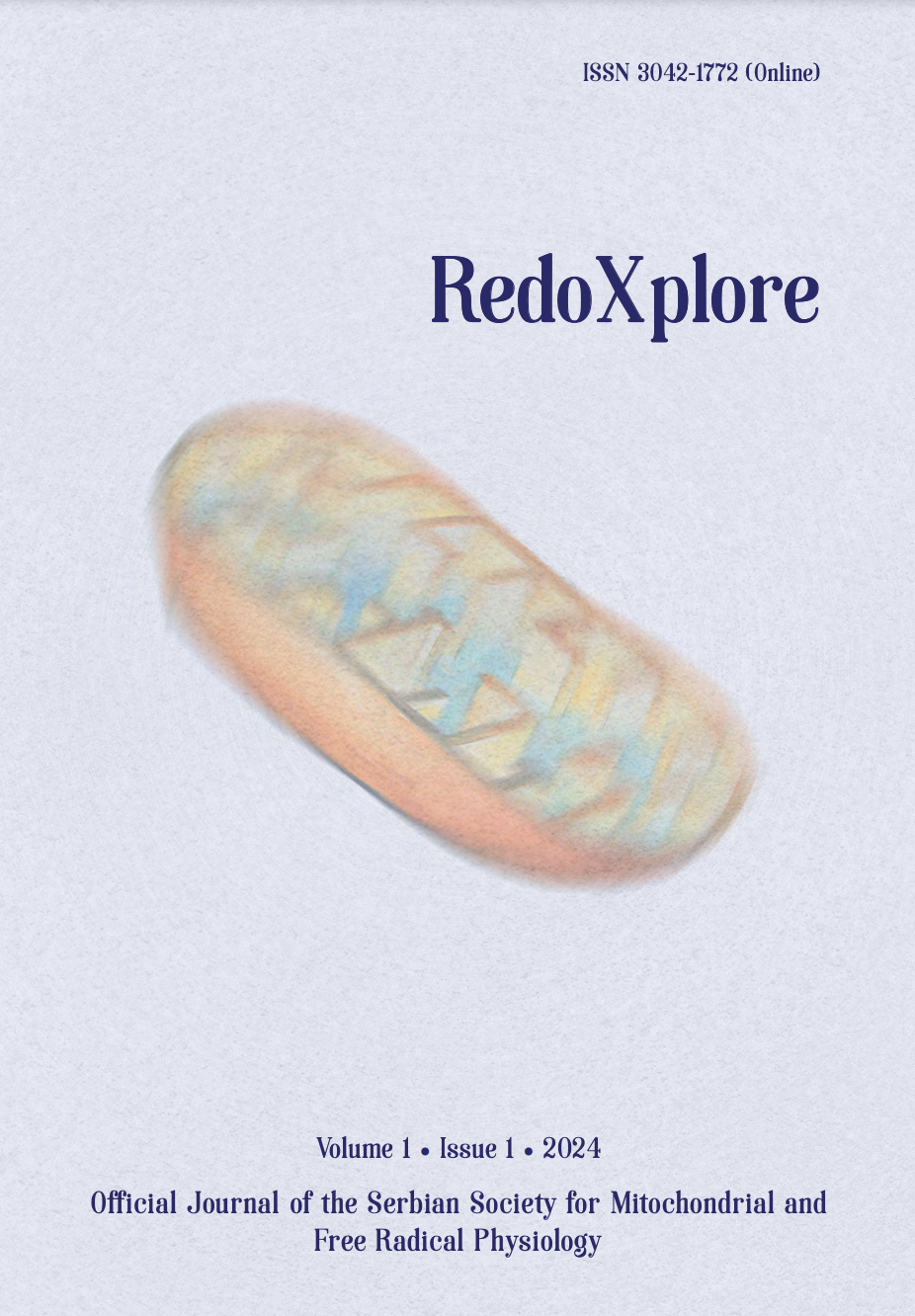
More articles from Volume 1, Issue 1, 2024
REDOX AND METABOLIC REPROGRAMMING OF BREAST CANCER CELLS AND ASSOCIATED ADIPOSE TISSUE - THE CORNERSTONES OF ADAPTIVE TUMOUR BEHAVIOUR
INSULIN MODULATES MITOCHONDRIAL STRUCTURAL AND FUNCTIONAL MOSAICISM IN BROWN ADIPOCYTES
NITRITE MITIGATES OXIDATIVE BURST IN ISCHEMIA/REPERFUSION IN BRAIN SLICES
NITRIC OXIDE, SUPEROXIDE AND PEROXYNITRITE – REDOX REGULATION OF THE CARDIOVASCULAR SYSTEM BY NITRO-OXIDATIVE STRESS AND S-NITROS(YL)ATION
DIETARY NITRATE AS PIVOT ON THE GUT MICROBIOTA-HOST REDOX COMMUNICATION
Hibernation and Neuroprotection: Differential Expression of Ferroptosis-Related Genes in Arctic Ground Squirrels
Institute of Arctic Biology, University of Alaska Fairbanks , Fairbanks , United States
Department of Chemistry and Biochemistry, University of Alaska Fairbanks , Fairbanks , United States
Department of Chemistry and Biochemistry, University of Alaska Fairbanks , Fairbanks , United States
Institute of Arctic Biology, University of Alaska Fairbanks , Fairbanks , United States
Institute of Arctic Biology, University of Alaska Fairbanks , Fairbanks , United States
Institute of Arctic Biology, University of Alaska Fairbanks , Fairbanks , United States
Editor: Bato Korac
Published: 29.08.2024.
Keynote lectures
Volume 1, Issue 1 (2024)
Abstract
Ferroptosis, a form of regulated cell death characterized by iron-dependent lipid peroxidation, is linked to neurodegenerative disorders and cold-induced cell death. SLC7A11 (xCT) plays a crucial role in protecting cells against ferroptosis by maintaining intracellular cysteine and glutathione levels. SLC7A11 requires the chaperone protein SLC3A2 for its localization on the plasma membrane to mediate cystine uptake. Arctic ground squirrels (AGS) are known to be protected from cold tissue temperatures and oxidative stress and to resist neuropathology following cerebral ischemia/reperfusion. This study investigated how ferroptosis is influenced by the hibernation season in AGS hippocampus. RNA-Seq, gene expression, and differential gene expression analysis were conducted on hippocampus tissue samples from male and female AGS collected during the summer active season, torpor, and interbout arousal (IBA). Hippocampus was dissected from partially thawed whole brain prior to RNA extraction. Total RNA samples were used for cDNA library construction and sequencing by BGI Americas Corporation (Cambridge, MA) and analyzed using CLC Genomics Workbench (QIAGEN). Genes were mapped to the Ictidomys tridecemlineatus reference genome and transcript (HiC_Itri_2, GCF_016881025.1). Results show the highest number of differentially expressed genes (4,042) in torpor compared to summer active animals. Notably, SLC7A11 expression was elevated in torpor compared to summer active animals (fold change: 1.80, FDR-p value: 0.0034). Additionally, SLC3A2 was significantly upregulated in torpor compared to IBA (fold change: 1.24; FDR-p value: 0.030). SLC7A11 transports glutamate(out)/cystine(in). Cystine is rapidly converted into cysteine, a limiting reactant for glutathione synthesis, in the presence of NADPH. These findings suggest that SLC7A11 and SLC3A2 may protect AGS from ferroptosis during the hibernation season. This research provides insights into the molecular mechanisms underlying neuroprotection in hibernating AGS and may have implications for understanding and potentially treating neurodegenerative disorders.
Citation
Copyright

This work is licensed under a Creative Commons Attribution-NonCommercial-ShareAlike 4.0 International License.
Article metrics
The statements, opinions and data contained in the journal are solely those of the individual authors and contributors and not of the publisher and the editor(s). We stay neutral with regard to jurisdictional claims in published maps and institutional affiliations.






